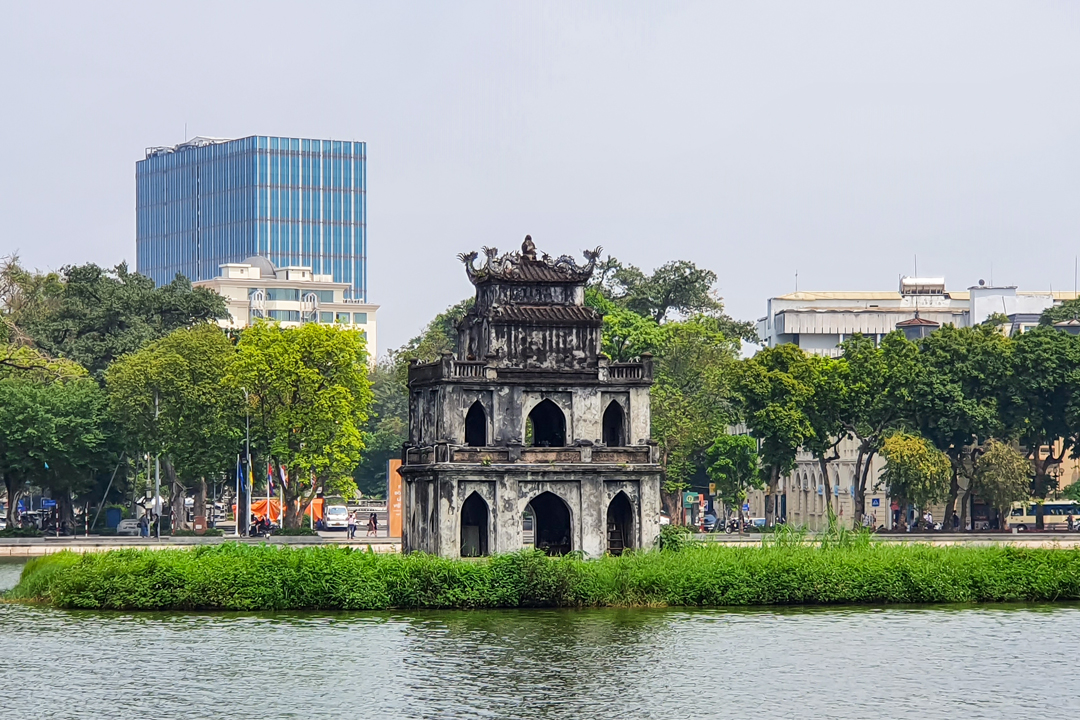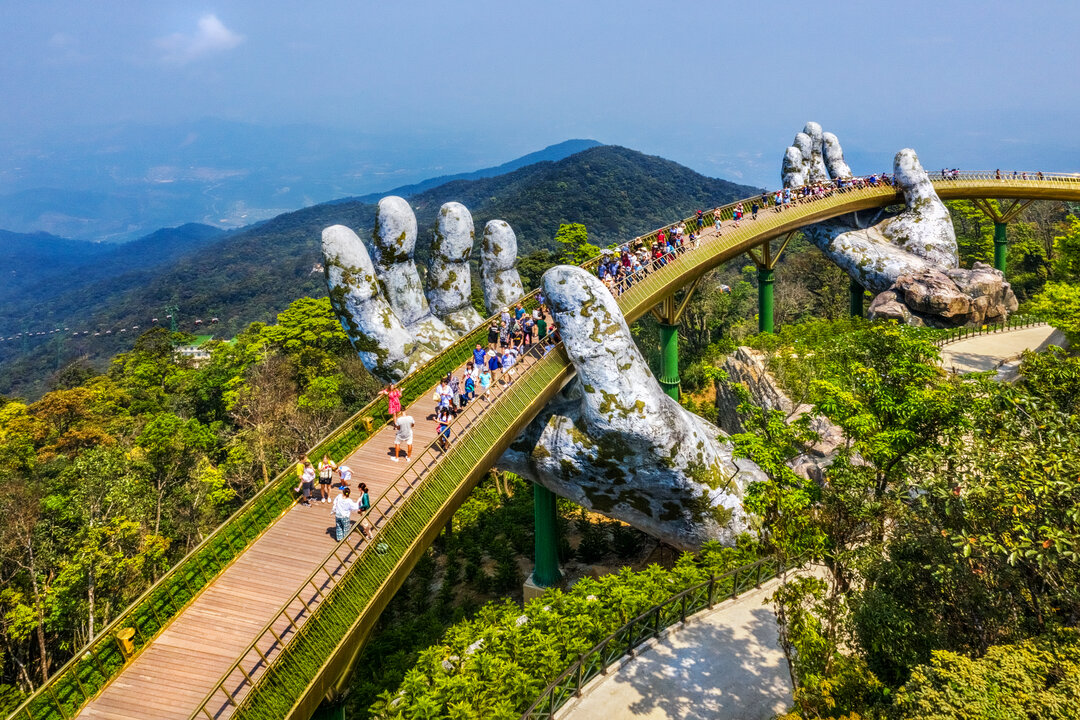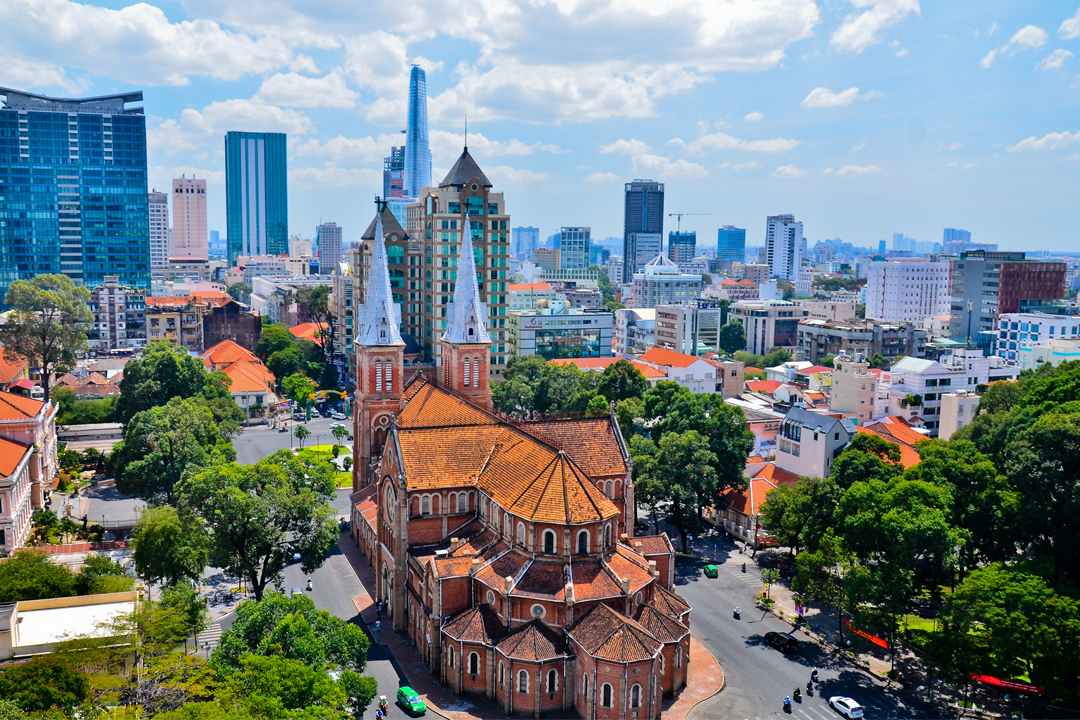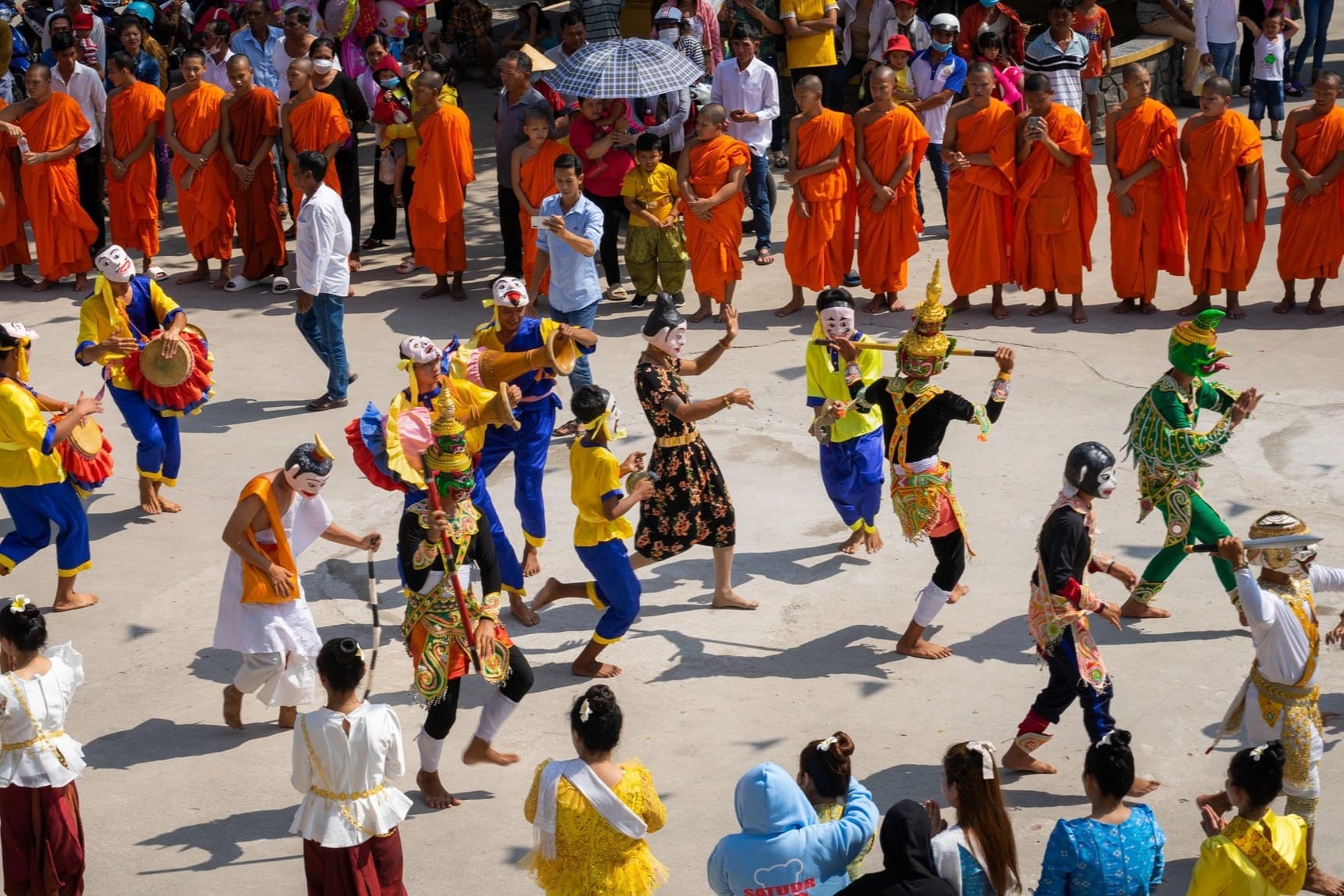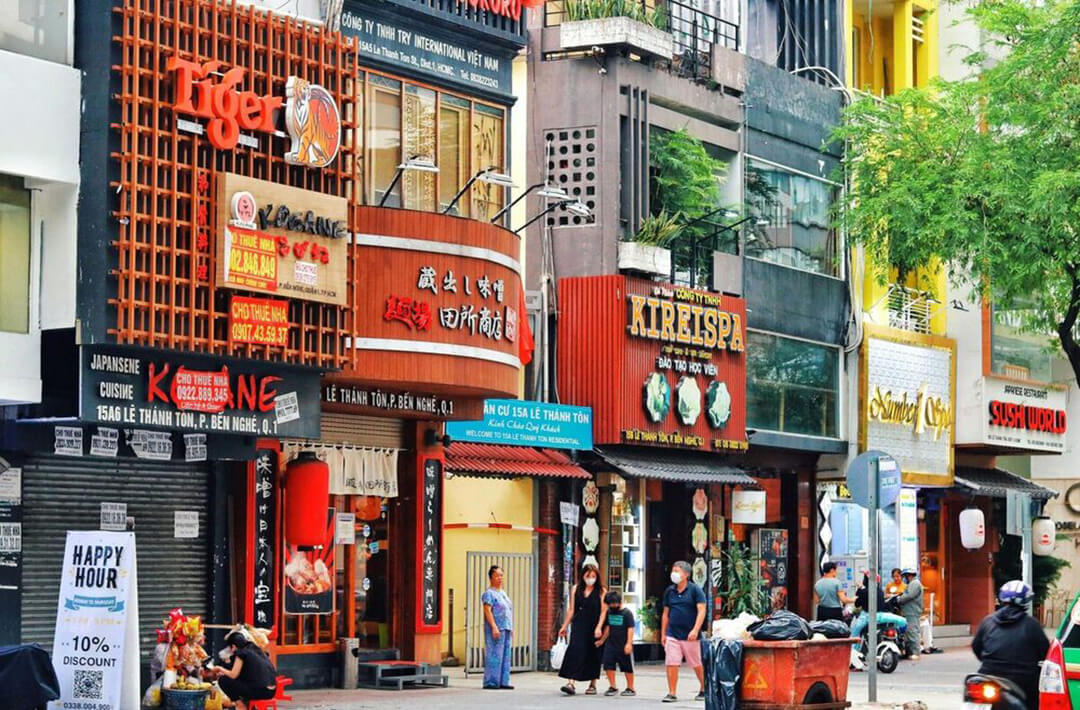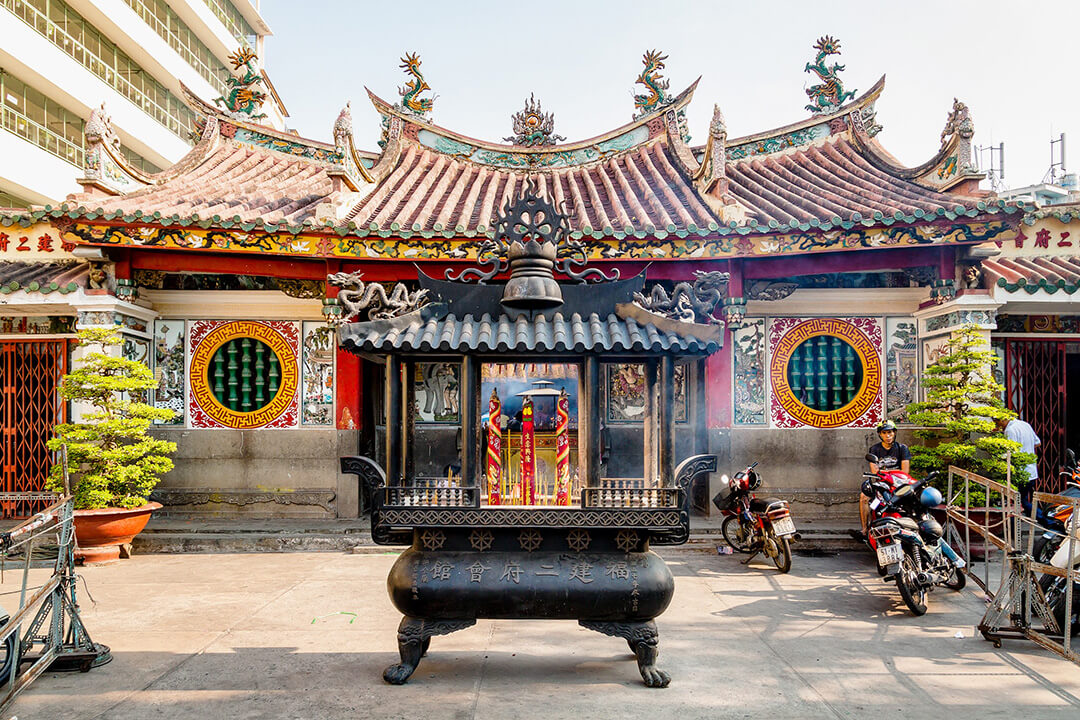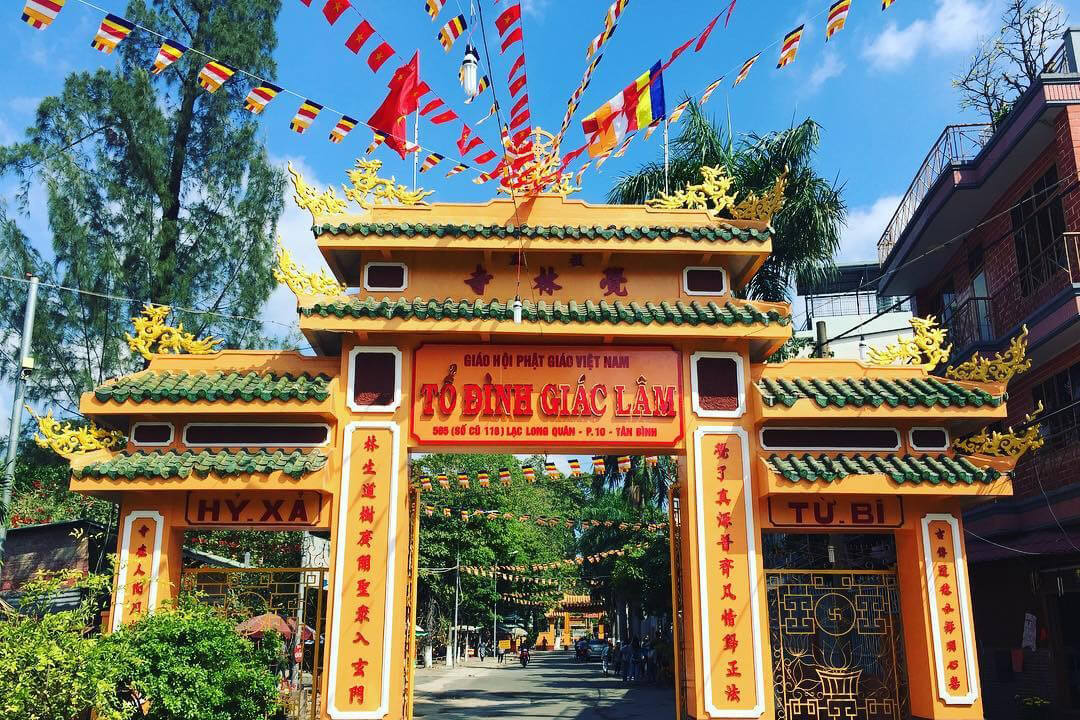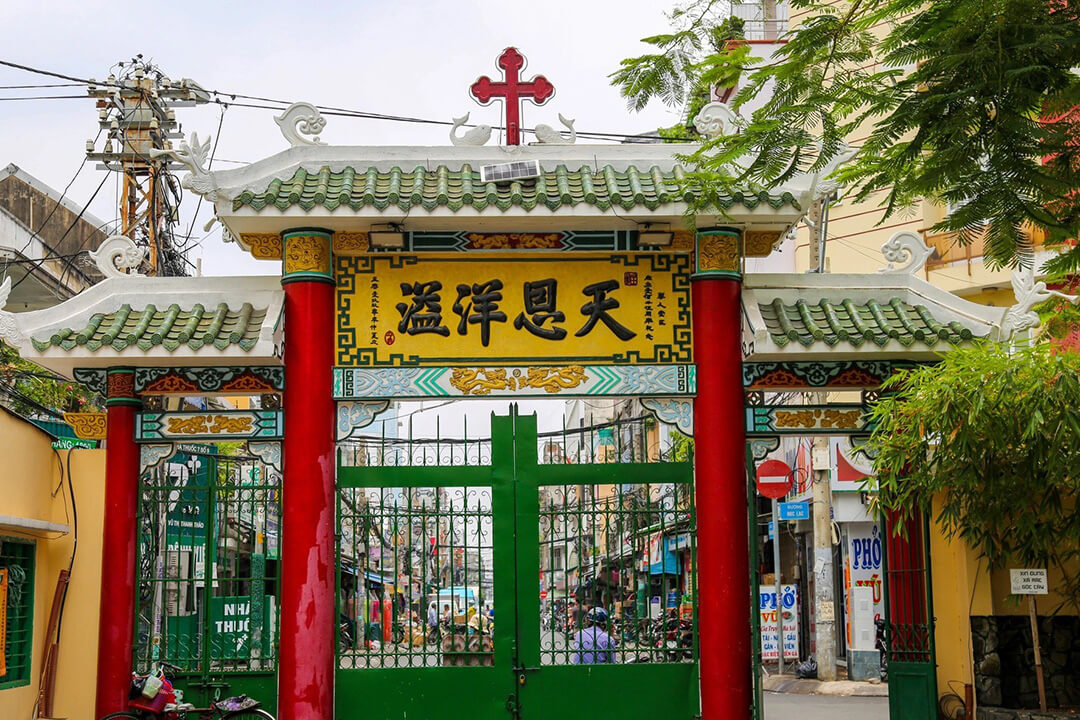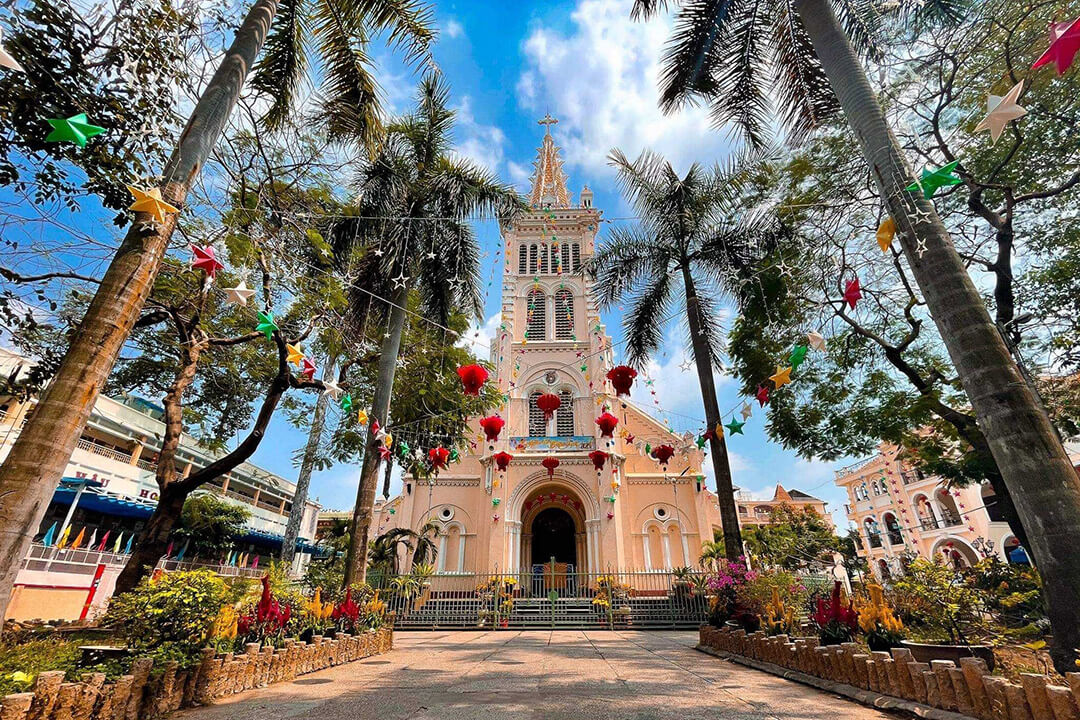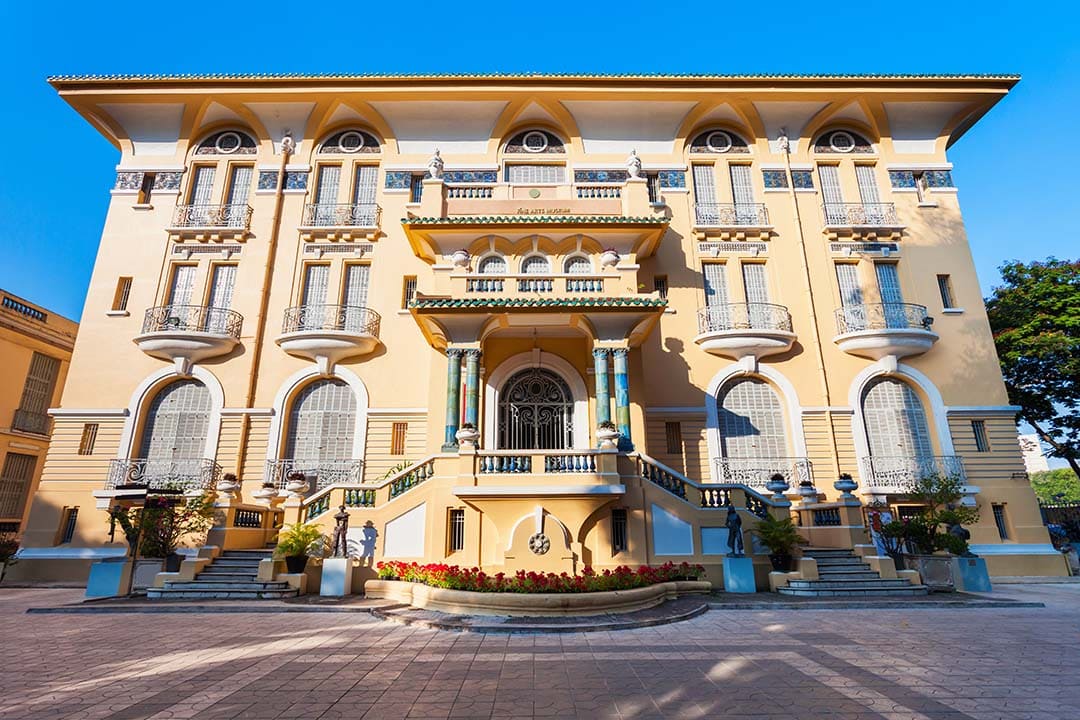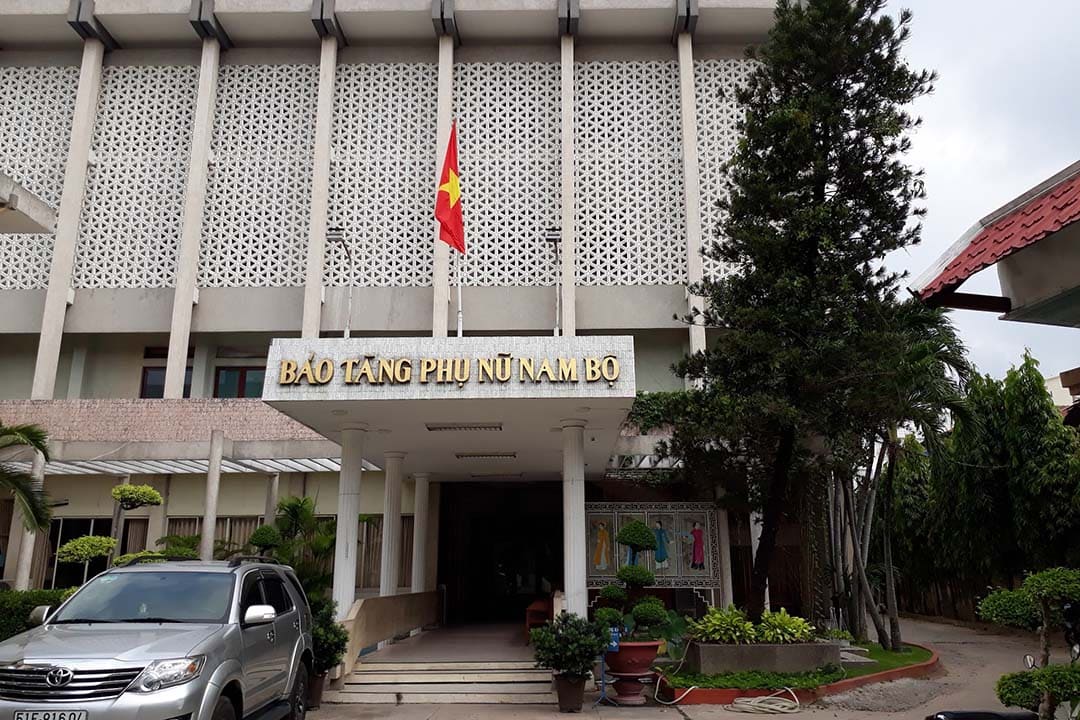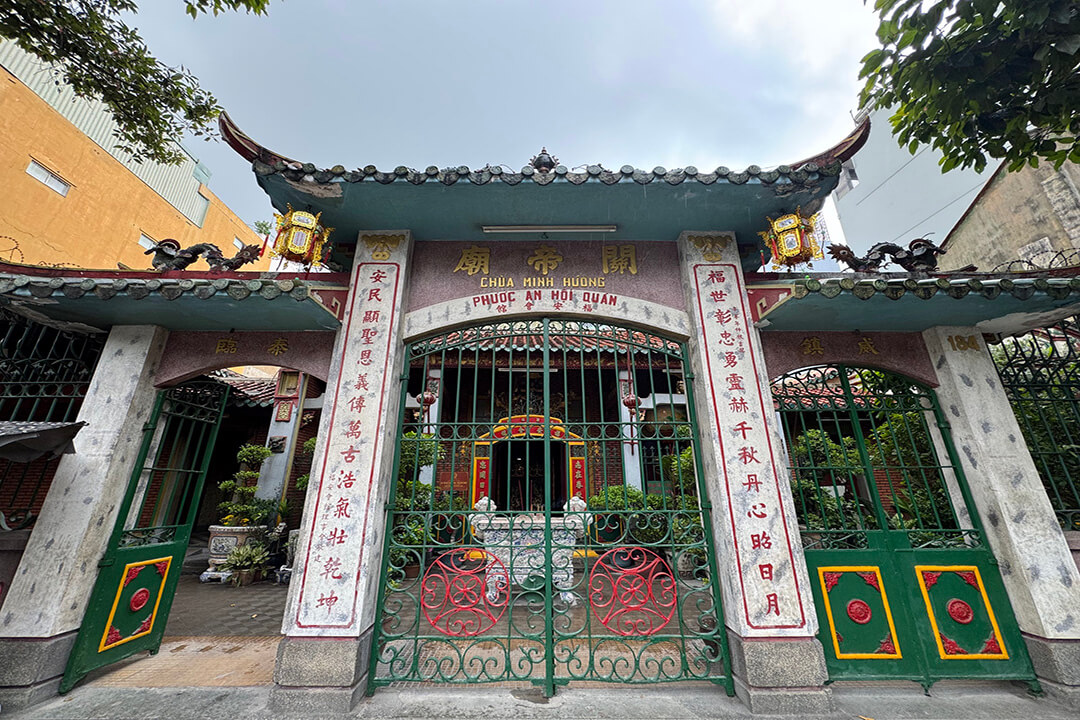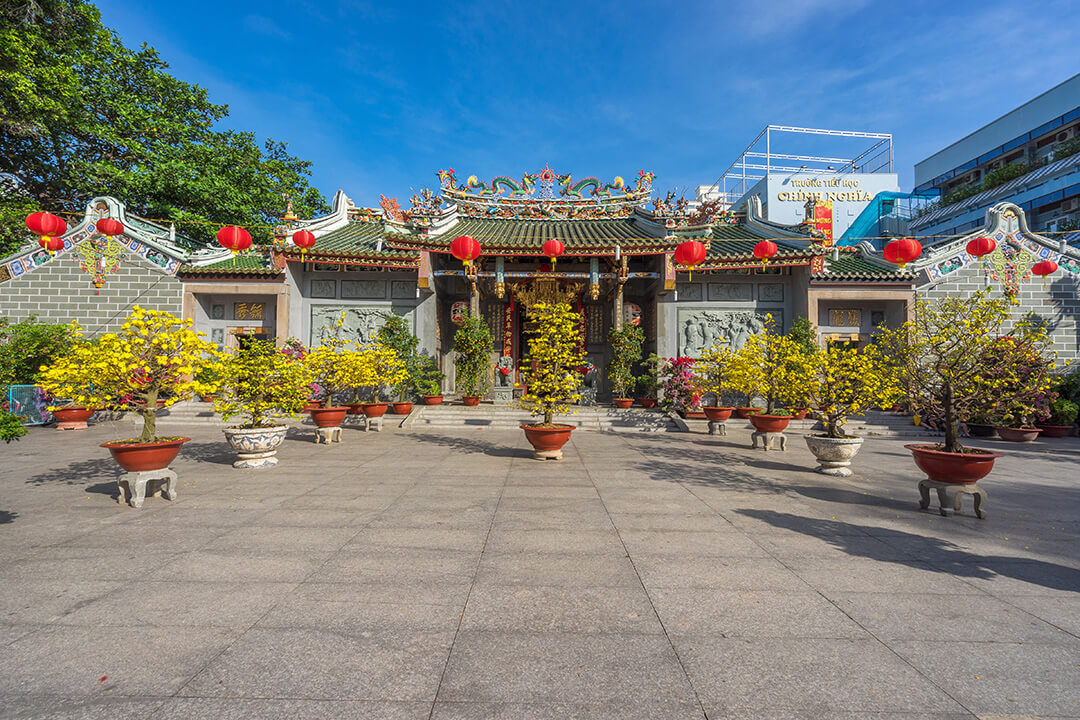Nov - 03 - 2025
The Ton Duc Thang Museum in Ho Chi Minh City stands as a dedicated tribute to the life, career, and enduring legacy of President Ton Duc Thang. He is one of Vietnam’s most respected leaders. Often overlooked in favor of the city's larger museums, this quiet and dignified institution offers a deeply personal and focused glimpse into the nation's revolutionary past. For travelers seeking to understand the fabric of modern Vietnamese history beyond the major battlefields, this museum is an essential stop. In this ultimate guide, GTrip will walk you through every facet of your visit. We cover the museum’s rich history, its unique architectural charm, detailed exhibition hall breakdowns, and all the practical information you need to plan a seamless and enlightening experience.
Overview of the Ton Duc Thang Museum
- Address: 5 Ton Duc Thang Street, Sai Gon Ward (Ben Nghe Ward, District 1), Ho Chi Minh City
- Opening hours: The Ton Duc Thang Museum opening hours are consistent throughout the week, with a midday closure.
- Monday: Closed
- Tuesday - Sunday: 7:30 AM - 11:30 AM & 1:00 PM - 5:00 PM
- Tickets: Free admission, free parking
Ton Duc Thang Museum, one of the most notable historical museums in Ho Chi Minh City, is dedicated entirely to the life and revolutionary career of President Ton Duc Thang. He was the second president of the Democratic Republic of Vietnam and the first president of the Socialist Republic of Vietnam. Located in a beautiful colonial-era building, the museum showcases thousands of artifacts, documents, and photographs that trace his journey from a young patriot to a national statesman. It also highlights the deep affection the Vietnamese people and international friends held for him, making it a place of both historical education and quiet reverence.
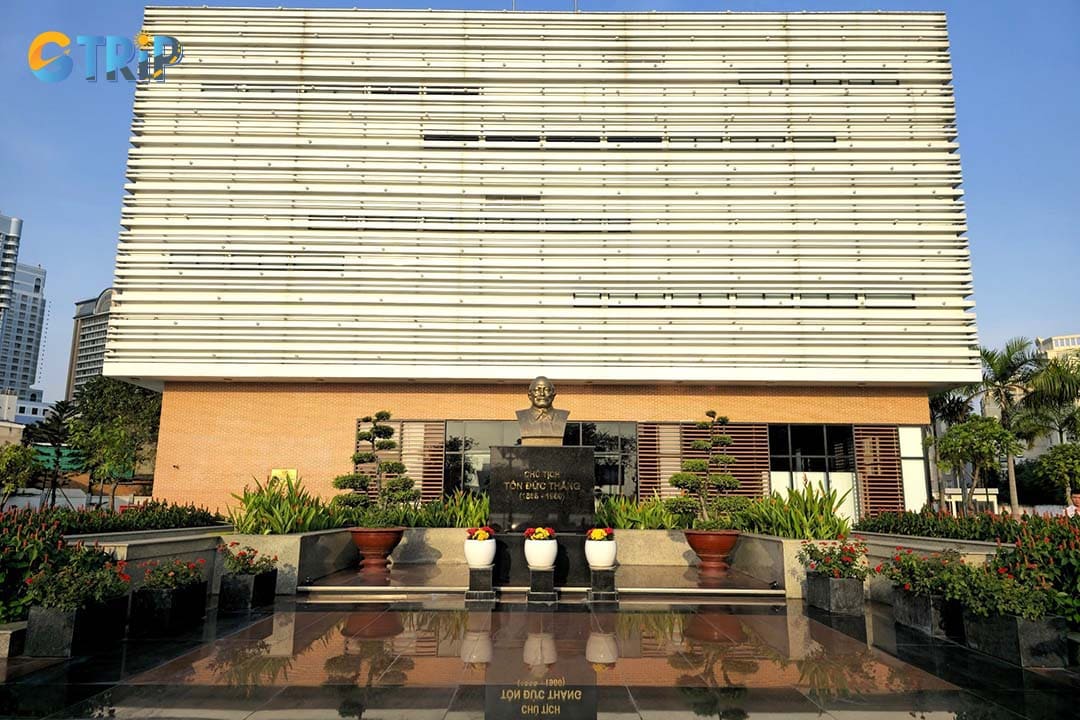
Ton Duc Thang Museum in Ho Chi Minh City honors the life and legacy of President Ton Duc Thang
History of the Ton Duc Thang Museum
The Ton Duc Thang Museum was officially established on August 20, 1988. The date was chosen specifically to commemorate what would have been the 100th birth anniversary of President Ton Duc Thang. Initially, it was known as the “Exhibition House of the Life and Career of President Ton Duc Thang”, a name that reflected its focused curatorial mission. In August 1990, its status was elevated, and it was formally renamed the Ton Duc Thang Museum.
Unlike its larger counterparts, this institution zeroes in on the personal and political journey of a single, pivotal figure. This singular focus is its greatest strength. By dedicating its space entirely to Ton Duc Thang’s contributions, the museum serves a vital role in patriotic education in Vietnam. It was conceived as a living symbol of diligence, integrity, and national pride. They intended to inspire and educate future generations of Vietnamese citizens about the sacrifices made for their country's independence and unification.

Dedicated entirely to his life and legacy, the museum stands out for its focused narrative
Unique architectural features of the museum
The museum’s architecture is a significant part of its charm, housed within a beautifully preserved colonial-era villa. The building features a classic French design with its high ceilings, large windows, and spacious balconies. This creates an atmosphere of quiet grandeur that contrasts with the modern city outside. The total exhibition space covers over 700 square meters, thoughtfully arranged to guide visitors through a clear, chronological narrative.
Inside, the five permanent galleries are designed to illustrate the key stages of Ton Duc Thang’s revolutionary life. This is achieved through a collection of more than 16,500 artifacts, photographs, and documents. The interior design masterfully blends its solemn, historical purpose with elements of Southern Vietnamese culture. For instance, the main memorial space incorporates traditional design motifs, and you will find stunning lacquer paintings depicting scenes from his childhood. For example, it is his stilt house in the Mekong Delta. This thoughtful combination of colonial structure, organized exhibition flow, and culturally significant interior details creates an atmosphere that is both profoundly educational and deeply respectful. Walking through its halls feels less like visiting a standard museum and more like stepping into a preserved moment of national history.
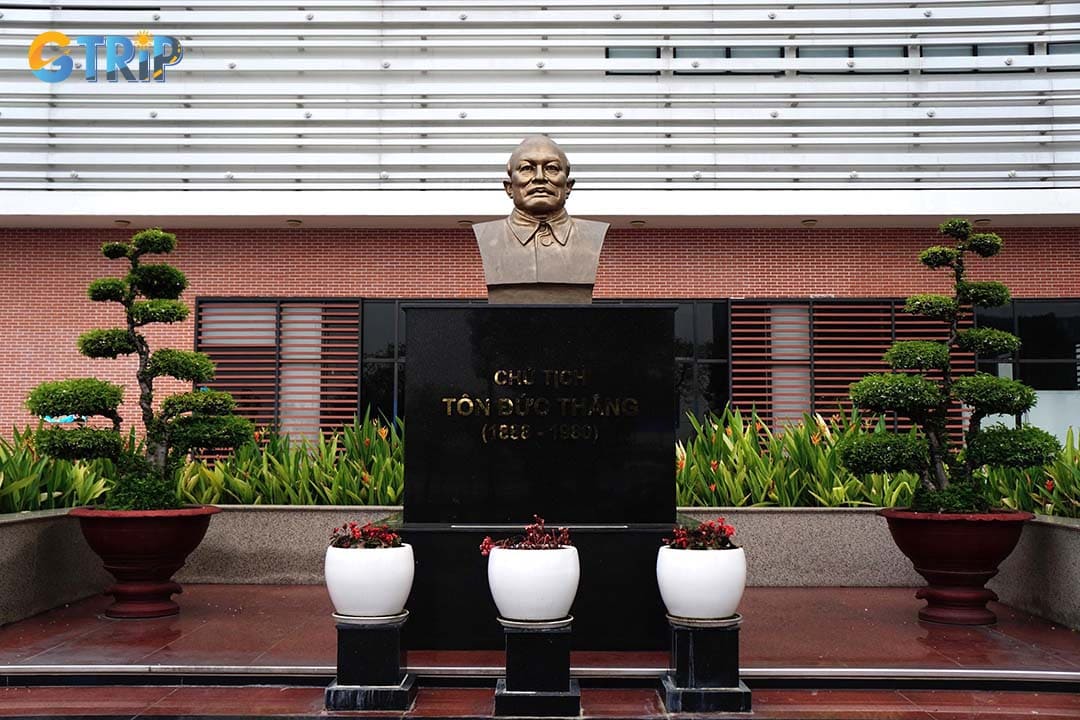
Ton Duc Thang Museum combines classic French architecture with traditional Southern Vietnamese design elements
Unique experiences at Ton Duc Thang Museum
A visit here is a journey through the life of a man who personified Vietnam’s struggle for independence. The exhibitions are not just collections of objects. They are curated stories that walk you chronologically and thematically through the President's profound influence on his nation. Let's explore what to see in the Ton Duc Thang Museum, room by room.
Exhibition room: President Ton Duc Thang and the South
This exhibition room is a heartfelt exploration of the President’s deep-rooted connection to Southern Vietnam, the land of his birth and early revolutionary awakening. The displays here bring his formative years to life. Visitors will see rare photographs of his childhood in Long Xuyen, An Giang Province, offering a window into the rural Mekong Delta life that shaped his character. The room contains fascinating artifacts from his time as a young worker in Saigon's bustling shipyards, including replicas of tools he used and documents related to the early labor movements he helped organize.
A significant portion of this gallery is dedicated to his revolutionary activities across the South. They showcase clandestine letters, political pamphlets, and personal items from his years organizing anti-colonial resistance. These exhibits powerfully illustrate his transition from a skilled mechanic into a dedicated patriot, laying the groundwork for a lifetime of service to his country. This room provides crucial context, grounding his later national leadership in his southern origins.
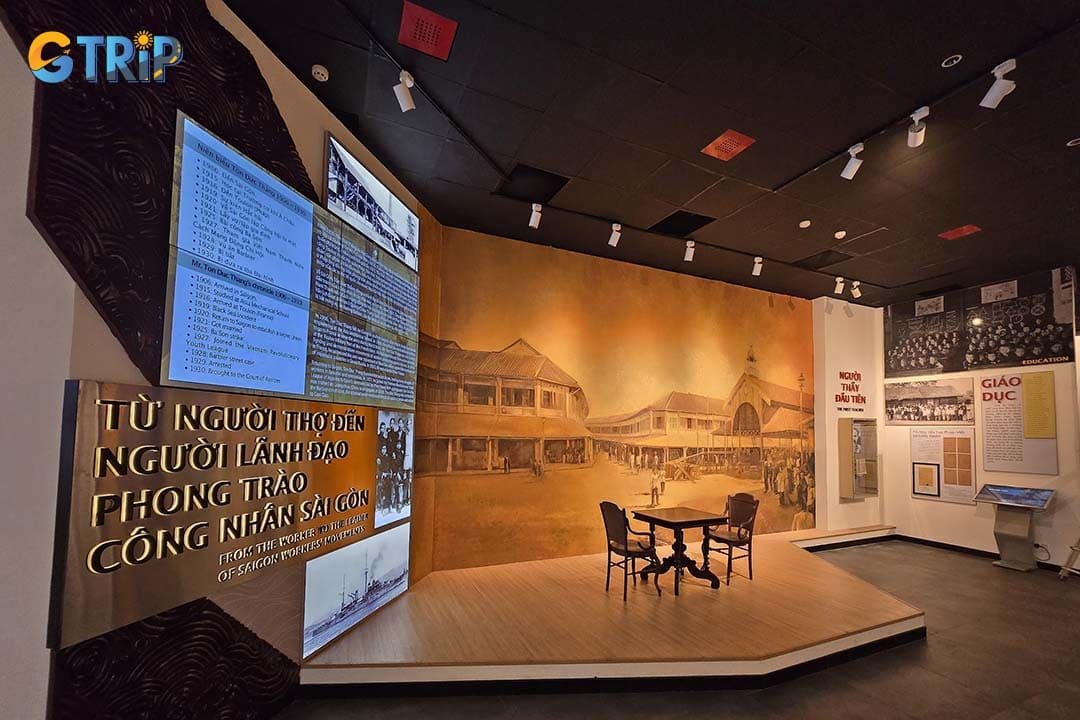
This exhibition room highlights President Ton Duc Thang’s Southern roots, featuring photographs, artifacts, and documents from his early life
Exhibition room: Gifts to President Ton Duc Thang
A testament to his stature on both the domestic and world stages, this exhibition room showcases the incredible array of gifts presented to President Ton Duc Thang throughout his career. It’s a fascinating display of diplomacy, respect, and affection. The collection features items from international heads of state, foreign delegations, and global organizations, reflecting Vietnam's diplomatic ties during the Cold War era. You might see items such as an intricately decorated sword from a Middle Eastern leader, a hand-painted vase from a Soviet-bloc nation. You can also see a sculpture representing solidarity from a Latin American country.
Equally touching are the gifts from ordinary Vietnamese citizens and local collectives. These often take the form of intricate artworks. They are hand-embroidered tapestries depicting his portrait, lacquer-ware boxes celebrating national reunification, and symbolic sculptures made from local materials. These personal tokens serve as a powerful reminder of the deep admiration and affection the Vietnamese people held for "Uncle Ton", who was seen as a figure of great integrity and simplicity. This room provides a unique lens through which to view his global and domestic standing.
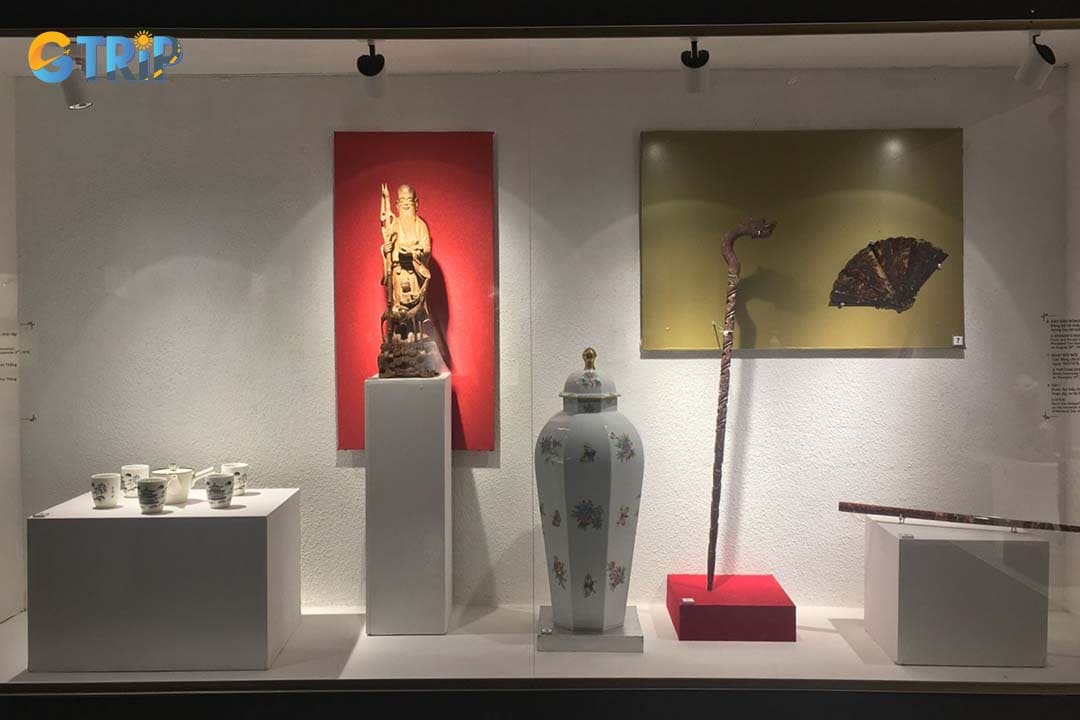
This exhibition room presents a remarkable collection of diplomatic and personal gifts given to President Ton Duc Thang
Exhibition Room: President Ton Duc Thang and the First National Assembly (1946-1960)
This gallery focuses on a pivotal period in Vietnam's political history and Ton Duc Thang's role within it. It details his contributions during the formation of the Democratic Republic of Vietnam and his service in the First National Assembly. The displays here are rich with historical significance. They feature official documents that bear his signature and photographs of him alongside other foundational leaders, including President Ho Chi Minh.
Visitors can explore exhibits that explain his critical duties, such as chairing the Standing Committee of the National Assembly. These displays break down the legislative processes and political challenges of a newly independent nation fighting for its survival. Artifacts like the official seal he used, personal pens, and copies of government decrees provide a tangible connection to the high-stakes decisions being made during this formative era. This room illuminates his steady rise as a trusted statesman and his instrumental role in building the political institutions of modern Vietnam.
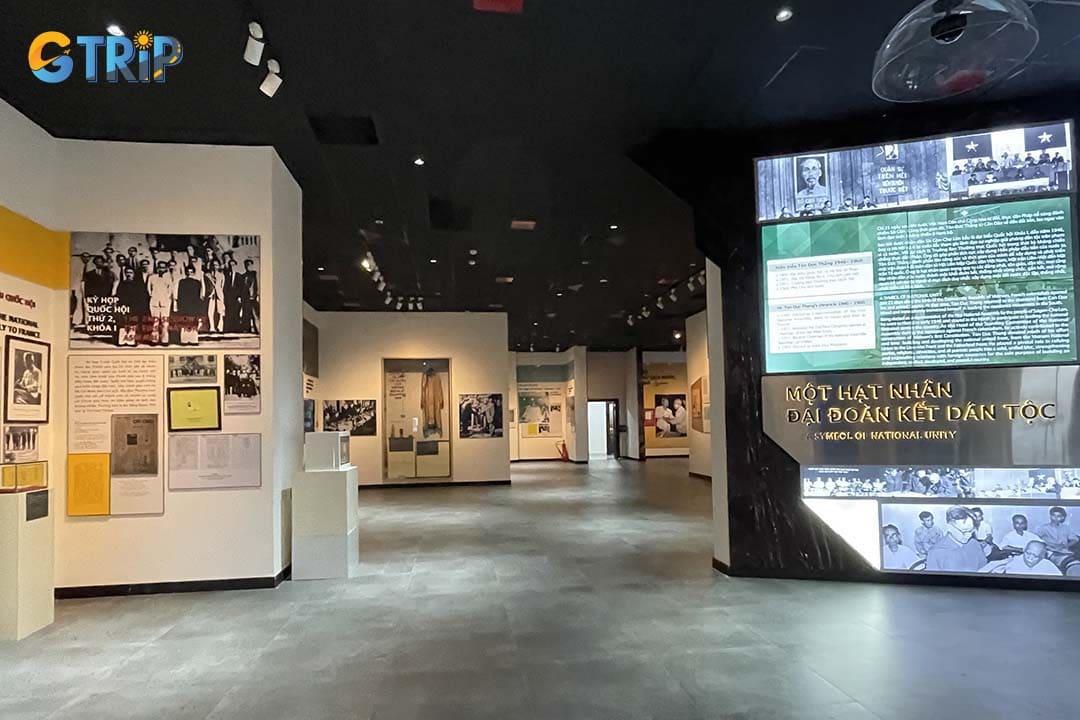
This exhibition room highlights President Ton Duc Thang’s vital role in Vietnam’s First National Assembly
Memorial room of President Ton Duc Thang at the museum
This room is the spiritual heart of the museum, designed as a solemn and respectful space for reflection. Upon entering, visitors are greeted by a traditional Vietnamese memorial altar, meticulously arranged with offerings of fruit and flowers. The soft scent of incense often hangs in the air, creating a serene and contemplative atmosphere. At the center of the altar stands a striking bronze bust of the President, capturing his kind yet resolute expression.
Flanking the memorial are the magnificent lacquer paintings mentioned earlier, which depict his humble childhood stilt house in An Giang. These artworks are not merely decorative. They serve as a powerful symbol of his connection to the common people and his simple lifestyle, even as he held the nation's highest office. This room is not intended just for viewing. It is a place for visitors to pause, reflect on his legacy, and pay their respects. It embodies the Vietnamese cultural tradition of honoring ancestors and esteemed leaders, making it a profoundly moving part of the museum experience.

The Memorial Room serves as the museum’s emotional centerpiece, featuring a bronze bust of President Ton Duc Thang, a traditional altar with offerings, and evocative lacquer paintings
Permanent Exhibition Rooms at the Museum
The core of the Ton Duc Thang Museum is its five permanent exhibition rooms, which together provide a comprehensive, chronological narrative of the President's life. A visit is a step-by-step journey that ties all the thematic rooms together, offering an unparalleled depth of understanding. This is what you will discover in each section:
1. Childhood, youth, and revolutionary awakening (1888-1920)
This first gallery transports you to the Mekong Delta at the turn of the 20th century. It explores Ton Duc Thang’s upbringing in a patriotic family in An Giang province and the values instilled in him from a young age. You will find exhibits detailing his early education and his move to Saigon to train as a mechanic. Artifacts in this section include family photographs, replicas of school reports, and illustrations of life in colonial Saigon. The centerpiece of this period is his journey to France and his participation in the famous 1919 Black Sea revolt. This was where he, as a French naval mechanic, took part in a mutiny to support the nascent Soviet Union. Displays vividly recount this event with maps, ship models, and accounts that showcase his early anti-imperialist convictions.
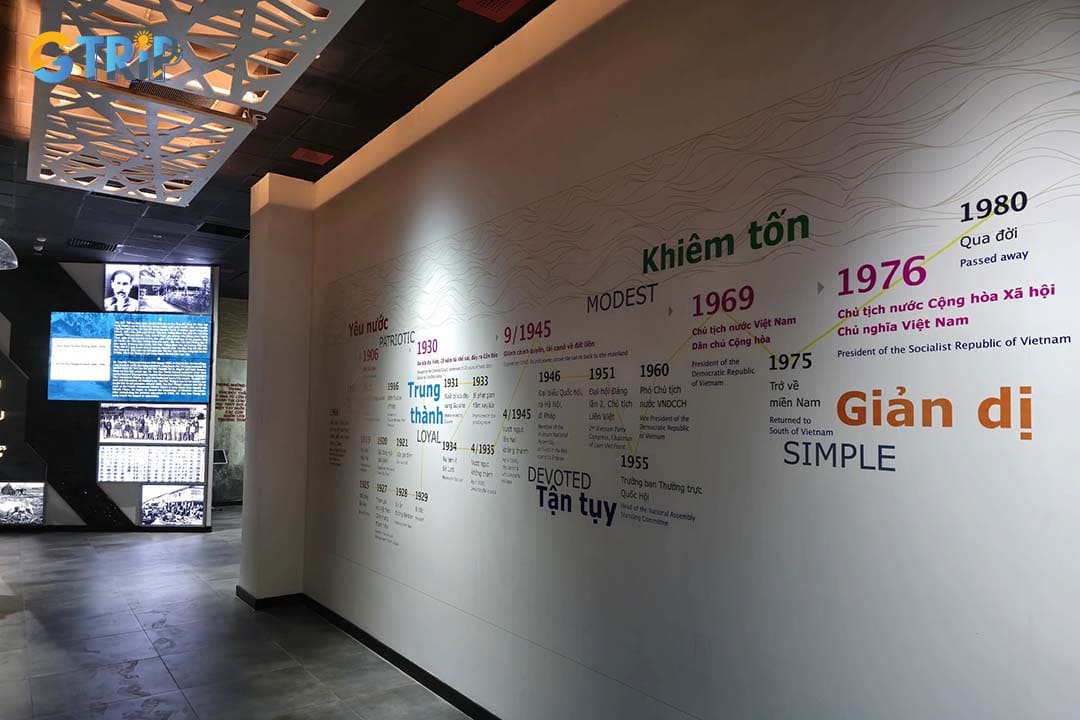
The first gallery traces Ton Duc Thang’s formative years in An Giang and Saigon, highlighting his early education, mechanical training, and pivotal role in the 1919 Black Sea revolt
2. Revolutionary activities in Vietnam and abroad (1920-1930)
This section follows his return to Vietnam and his work as a pioneering labor organizer. The exhibits focus on his role in establishing the first workers' unions in Saigon, a critical step in the development of Vietnam's communist and nationalist movements. You can see artifacts such as historical union membership cards, secret political pamphlets he helped distribute, and tools from the Ba Son shipyard where he worked. It highlights his courage and leadership in mobilizing workers against the French colonial authorities, a period of immense personal risk that set the stage for his decades-long revolutionary career.
3. Imprisonment and resilience in Con Dao (1930-1945)
Perhaps the most harrowing and inspiring gallery, this room documents his 15 years of imprisonment in the infamous Con Dao Prison. It was the "hell on earth" reserved for Vietnam's most determined revolutionaries. The exhibits do not shy away from the brutal reality of the penal colony. Visitors will see displays illustrating the harsh conditions, including replicas of prisoner uniforms, leg shackles, and cruel punishment tools. But the focus is on resilience. This gallery showcases how Ton Duc Thang and his comrades turned the prison into a "revolutionary school", organizing study groups, writing poetry, and maintaining their political resolve. Testimonials from fellow inmates and artifacts crafted from scrap materials tell a powerful story of human endurance and unwavering spirit against unimaginable hardship.
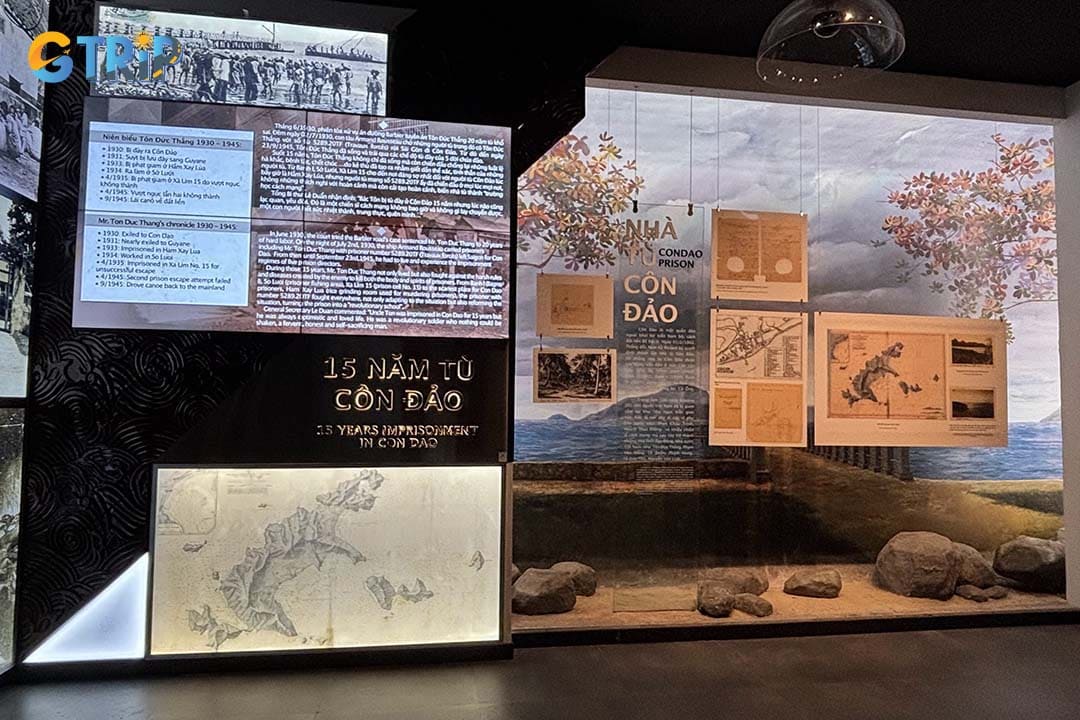
This powerful gallery recounts Ton Duc Thang’s 15 years in Con Dao Prison
4. Contributions to the resistance and national construction (1945-1969)
This extensive gallery covers the period from his release from Con Dao after the August Revolution to his service as Vice President under Ho Chi Minh. The displays chronicle his immediate rise within the new government, highlighting his work in uniting various political factions in the South. You will see countless historical photographs of him at major state events, official government decrees related to economic reconstruction and land reform, and diplomatic gifts received during his international travels. This section shows him as a key administrator and stabilizing force during the tumultuous First Indochina War and the subsequent division of the country. This culminates in his role as a respected elder statesman in North Vietnam.
5. Presidency and national unification (1969-1980)
The final permanent gallery is dedicated to his time as President, a role he assumed after the death of Ho Chi Minh in 1969. The exhibits focus on his leadership during the final years of the Vietnam War and the monumental task of national reunification that followed the fall of Saigon in 1975. Here, you can see documents and photographs related to the unification process, the renaming of Saigon to Ho Chi Minh City, and the establishment of the Socialist Republic of Vietnam. The gallery also shines a light on his personal life during this period, emphasizing his simple, frugal lifestyle. Personal belongings from his final years, such as his glasses, his modest clothing, and calligraphed quotes on integrity, reinforce his image as "Uncle Ton". He was a leader who remained a man of the people until his passing in 1980.
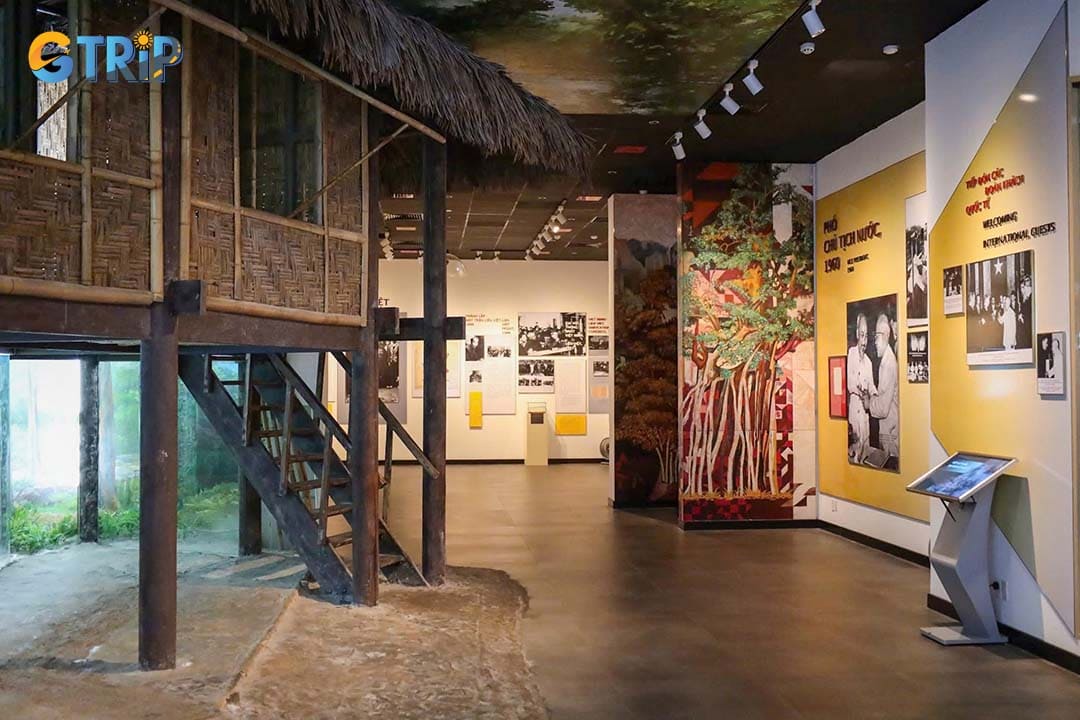
The final gallery honors Ton Duc Thang’s presidency, highlighting his leadership through Vietnam’s reunification, his humble lifestyle, and the image of “Uncle Ton”
How to get to the Ton Duc Thang Museum in Ho Chi Minh City
Where is the Ton Duc Thang Museum located in HCMC? It’s conveniently situated in District 1, making it easily accessible from most tourist areas. Here are the best ways to get there:
- By motorbike: Renting a motorbike is a popular and flexible option for exploring Ho Chi Minh City. Rentals cost between 120,000 - 160,000 VND per day. This gives you the freedom to explore the museum and nearby attractions at your own pace.
- By bus: For a local and budget-friendly experience, several public bus routes stop near the museum. Look for routes 02, 03, 12, 56, 88, and 124, which all have stops within a short walking distance.
- By taxi or ride-hailing apps: The quickest and most convenient option is to use a ride-hailing app like Grab or XanhSM. A car or motorbike taxi can take you directly to the museum entrance from anywhere in the city for a very reasonable price.
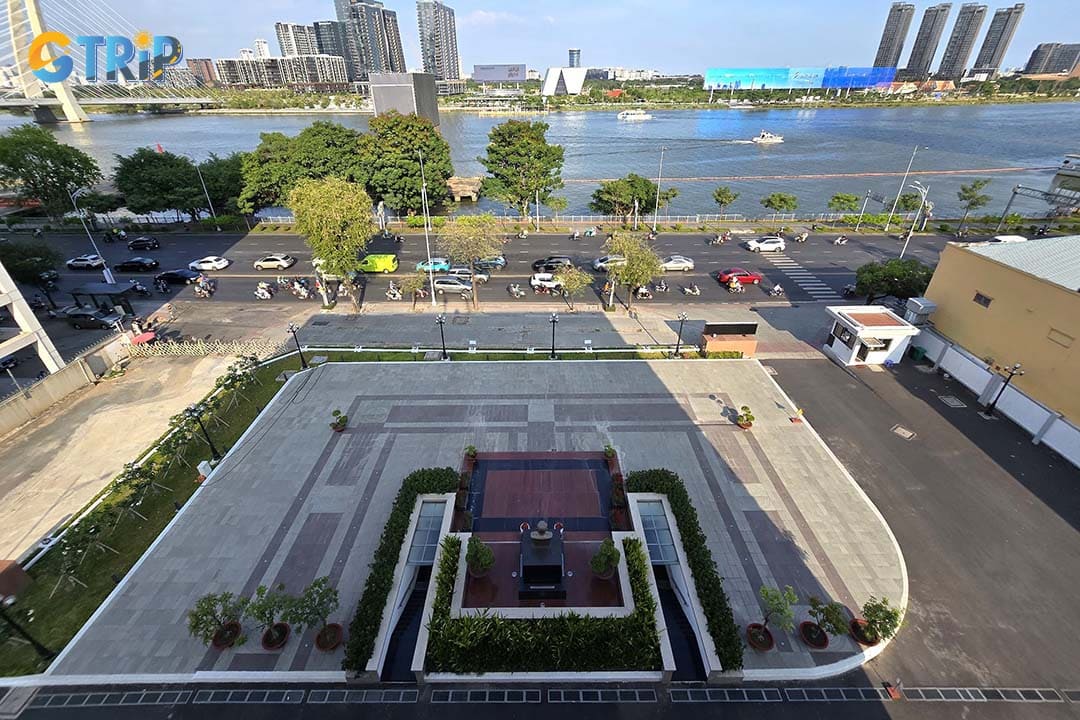
You can get to Ton Duc Thang Museum by many transportation
Nearby attractions to the Ton Duc Thang Museum
The museum’s prime location in Saigon Ward makes it an excellent starting point for a day of exploration. Here are some fantastic attractions just a short distance away:
- Japanese Town (750 m): Immerse yourself in a mini-Tokyo right in Saigon. This lively area, centered around Le Thanh Ton Street, is a fantastic cultural hub packed with authentic Japanese restaurants, izakayas, ramen bars, and quirky cafes.
- Nguyen Van Binh Book Street (1.2 km): A paradise for book lovers and a peaceful escape from the city's buzz. This charming pedestrian-only street is lined with quaint bookstores, coffee shops, and shaded benches perfect for a quiet read.
- Ben Thanh Market (1.5 km): The city’s most famous market is an absolute must-visit. Dive into the bustling aisles to shop for souvenirs, textiles, and traditional handicrafts, or head to the food section to sample an incredible variety of local Vietnamese street food.
- Bach Dang Wharf (1.6 km): A beautiful riverside promenade offering stunning views of the Saigon River. It is home to a modern park, trendy cafes, and is the departure point for dinner cruises and waterbus services.
- Independence Palace (1.8 km): Also known as the Reunification Palace, this iconic landmark is frozen in time. Explore the historic site where the Vietnam War officially ended on April 30, 1975, and tour its war command rooms, presidential chambers, and 1960s-era furnishings.
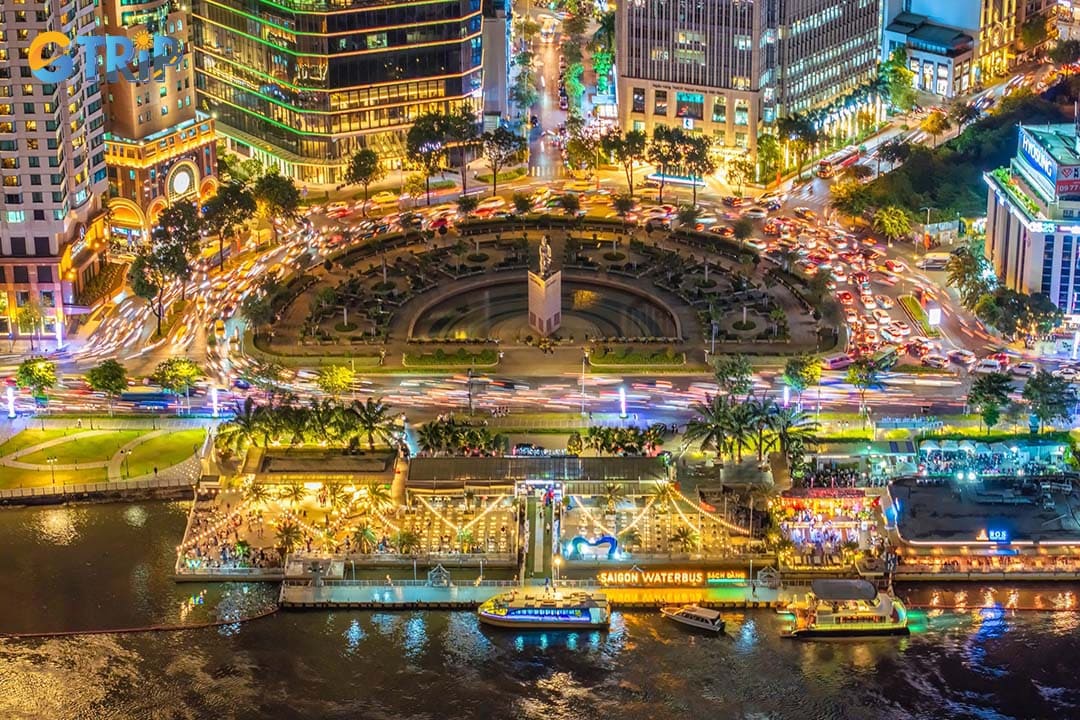
After exploring Ton Duc Thang Museum, you can wander around in Bach Dang Wharf
Practical tips for visitors
To ensure a smooth and respectful visit, keep these practical tips in mind. They are simple guidelines that help preserve the integrity of this important memorial site.
- Plan your visit from Tuesday to Sunday: The museum is always closed on Mondays.
- Wear respectful and neat clothing: This is a memorial to a national leader, so dressing modestly (covering shoulders and knees) is a sign of respect. Avoid shorts, tank tops, and revealing outfits.
- Follow the guidance of museum staff: They are there to help and ensure the preservation of the exhibits. Stay within designated areas and follow any posted instructions.
- Keep quiet and maintain a respectful demeanor: Speak in low tones and avoid causing disruptions, as many visitors are there for solemn reflection.
- Do not bring food, drinks, flammable items, or large bags inside: Lockers may be available at the entrance for storing your belongings.
- Help keep the premises clean: Dispose of all trash properly in the bins provided outside the exhibition halls.
- Do not touch or lean on the exhibits, display cases, or artifacts: These items are irreplaceable historical treasures. Photography is generally allowed, but be sure to disable your flash.

Remember the above tips to have an enjoyable experience
The Ton Duc Thang Museum offers a unique and profound journey into the heart of Vietnam's 20th-century history. It provides a quiet, insightful, and completely free cultural destination that stands as a peaceful counterpoint to the vibrant energy of Ho Chi Minh City. Through its well-curated exhibitions, visitors gain a deep appreciation not only for a great national leader but also for the values of integrity, resilience, and patriotism that continue to shape Vietnam today. With this guide in hand, you're ready to explore the legacy of a man who dedicated his entire life to his country. For more curated travel plans in Ho Chi Minh City and beyond, trust GTrip to make your journey unforgettable.

